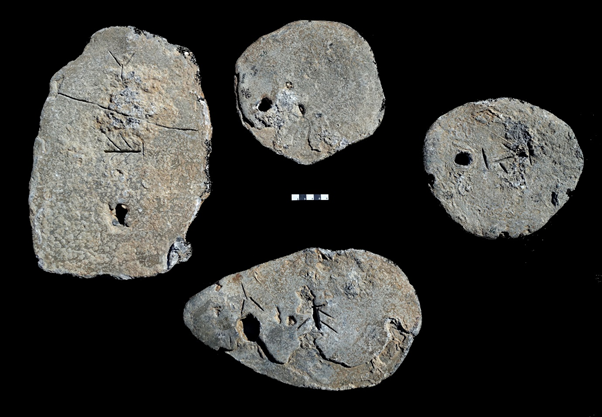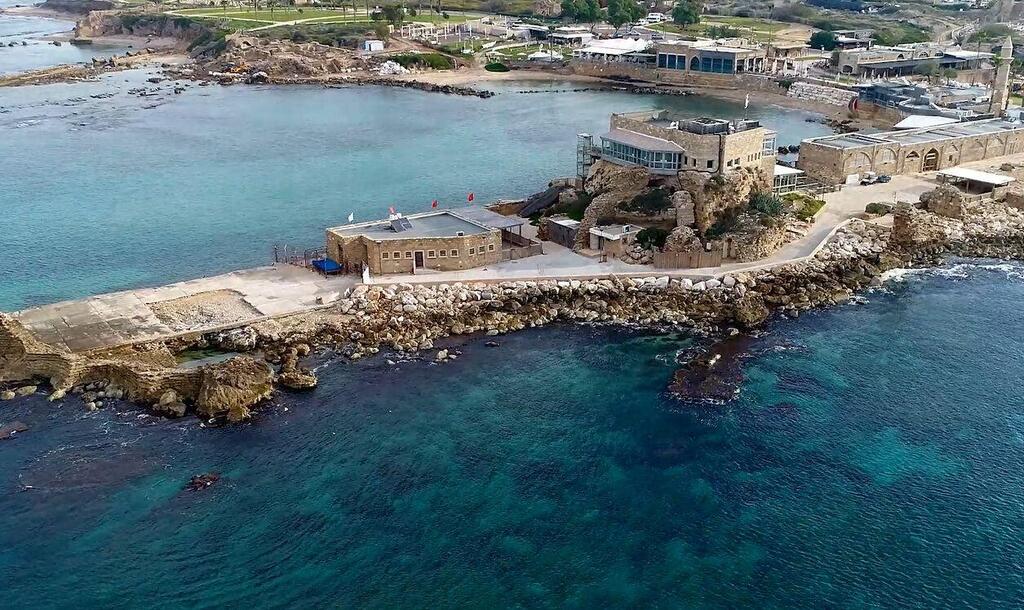Getting your Trinity Audio player ready...
The Late Bronze Age of the Mediterranean Sea basin was an era characterized by complex supra-regional relations and diplomacy, with trade and exchange of gifts being common practices.
Now, incised lead ingots and stone anchors found in the southern anchorage of the port of Caesarea and across the Israeli shoreline provide evidence to trade relations between Cyprus and Sardinia dating back 3,500 years ago.
2 View gallery


Bronze Age lead ingots found in anchorage Caesarea
(Photo: Journal of Archeological Science)
Owing to these findings, Prof. Naama Yahalom-Mack of the Institute of Archeology and Prof. Yigal Erel of the Institute of Earth Sciences at the Hebrew University suggest the existence of commercial ties between ancient populations in Cyprus and Sardinia — two Mediterranean islands located some 2,500 km (1,550 miles) apart.
The study was published in the Journal of Archeological Science and was conducted in cooperation with Dr. Ehud Galili and Prof. Assaf Yasur-Landau of the Haifa University.
Using isotopic analysis of the ingots, the researchers compared their findings to other archeological artifacts from across the Mediterranean Sea and proved they are made of lead mined in the central Mediterranean island of Sardinia.
The ingots were incised with Cypro-Minoan markings, which remain undeciphered to this day, yet are known to have been in use in Cyprus during the Late Bronze Age. Accordingly, the researchers concluded that there were vast commercial ties between the two populations with the purpose of transporting raw material.
"The study teaches us about the active role that the Cypriots had in trade during the same era, and how far they were willing to go in order to import lead, used to create luxury goods at the end of the era," Prof. Yahalom-Mack said.
"We think that along with lead, they also imported tin — a sought-after metal in Cyprus and the surrounding area for making bronze. The three metals — copper, lead, and tin — were sold to port cities along the coastlines, including the shores of today's Israel."


